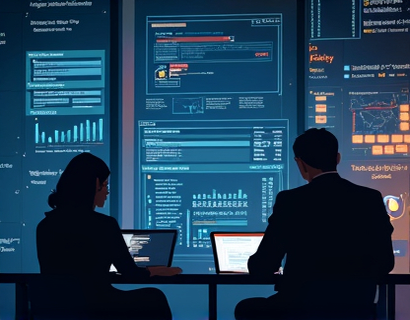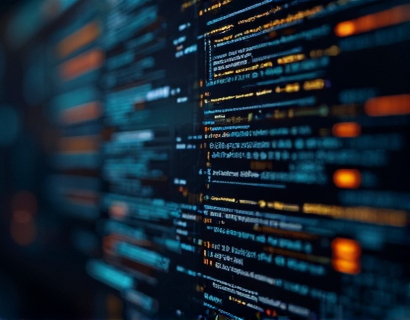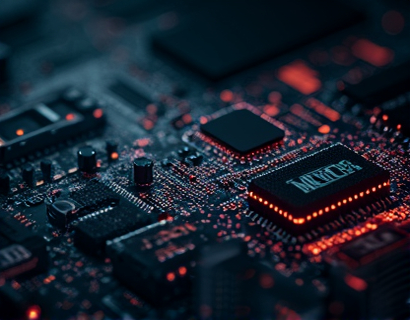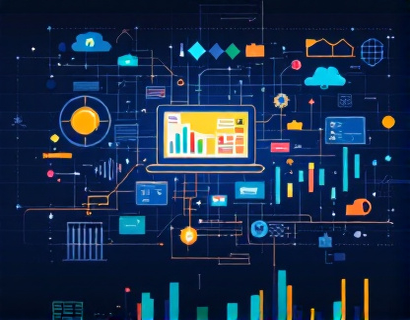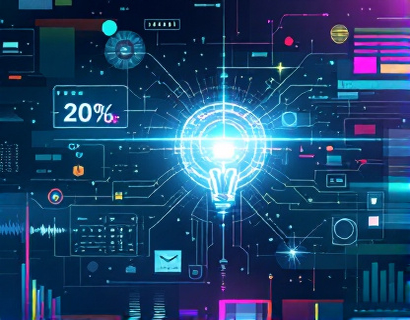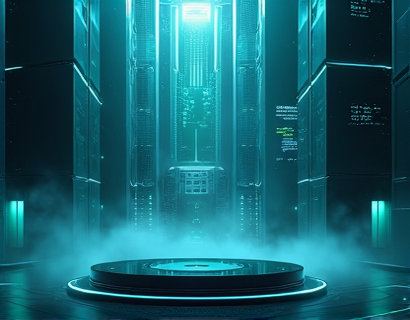Elevate Your EVM-Based Blockchain Projects: Mastering Scalability and Security with Advanced Layer 2 Solutions
In the rapidly evolving landscape of blockchain technology, Ethereum Virtual Machine (EVM)-based projects have become the cornerstone for a wide array of decentralized applications (dApps). However, as these projects grow in complexity and user base, scalability and security emerge as critical challenges. To address these issues, advanced Layer 2 (L2) solutions have gained prominence, offering transformative enhancements that empower developers to build faster, more secure, and cost-effective dApps. This article delves into the intricacies of L2 solutions, focusing on how they can elevate EVM-based blockchain projects to new heights of performance and reliability.
Understanding the Limitations of EVM-Based Blockchains
EVM-based blockchains, while robust and secure, face inherent limitations that hinder their scalability. The primary bottleneck is the block size and the time required to process transactions and finalize blocks. Ethereum, for instance, processes transactions at a rate of around 15 per second, which is significantly lower compared to traditional payment systems. This limitation leads to higher transaction fees and longer confirmation times, especially during peak usage periods. Moreover, the security of the network is closely tied to the computational power of its nodes, which can be a double-edged sword. While a strong network is secure, it also means higher energy consumption and operational costs.
Introducing Layer 2 Solutions
Layer 2 solutions are designed to address these scalability and efficiency issues by moving certain operations off the main blockchain (Layer 1). These solutions build upon the foundational security of Layer 1 while providing faster transaction processing, lower fees, and higher throughput. L2 solutions can be categorized into several types, each with its unique approach to enhancing the blockchain experience.
State Channels
State channels are one of the most promising L2 solutions. They allow multiple transactions to be executed off-chain between two or more parties, with only the final state being recorded on the blockchain. This mechanism significantly reduces the load on the main chain, as only the initial and final states need to be verified. State channels are particularly useful for applications that involve frequent, small transactions, such as gaming or micropayments. By offloading these transactions to a private channel, users experience near-instant confirmations and minimal fees, while the blockchain remains secure and decentralized.
Plasma
Plasma is another innovative L2 solution that aims to scale Ethereum by creating a network of child chains, or "plasma chains," which are connected to the main Ethereum blockchain. Each plasma chain can process multiple transactions independently, and only the root transactions are submitted to the main chain. This hierarchical structure not only increases transaction throughput but also reduces gas fees and confirmation times. Plasma chains are secured by a mechanism called "bulletproofs," which ensures that all transactions on the child chains are valid without the need to replay every single transaction on the main chain. This approach maintains the security of the EVM while significantly enhancing scalability.
Optimistic Rollups
Optimistic rollups represent a different approach to L2 scaling. Instead of creating separate chains, optimistic rollups bundle multiple transactions into a single transaction on the main chain. The assumption is that the transactions within the rollup are valid, and any disputes are resolved through a challenge period. If no one challenges the rollup within the specified time frame, the transaction is considered final. This method drastically reduces the computational load on the main chain, leading to faster transaction times and lower fees. Optimistic rollups are particularly effective for applications that require high transaction volumes, such as decentralized finance (DeFi) platforms.
ZK Rollups
ZK (Zero-Knowledge) rollups take the concept of rollups a step further by using zero-knowledge proofs to validate transactions off-chain. These proofs allow the main chain to verify the correctness of a large number of transactions without needing to process each one individually. ZK rollups are highly efficient and secure, as they provide a cryptographic guarantee of the transaction's validity. This makes them ideal for complex dApps that require high security and performance, such as decentralized exchanges (DEXs) and lending protocols.
Benefits of Implementing L2 Solutions
The adoption of L2 solutions brings a multitude of benefits to EVM-based blockchain projects. Firstly, scalability is significantly improved, allowing for a higher number of transactions per second without compromising the network's stability. This is crucial for applications that expect high user engagement and transaction volumes. Secondly, L2 solutions enhance security by offloading transaction processing to specialized layers, reducing the risk of network congestion and potential vulnerabilities. Finally, the reduced computational load translates to lower gas fees, making dApps more accessible and user-friendly.
Challenges and Considerations
While L2 solutions offer substantial advantages, they also come with their own set of challenges and considerations. One of the primary concerns is the complexity of integrating L2 protocols with existing EVM-based projects. Developers need to ensure compatibility and seamless interaction between on-chain and off-chain components. Additionally, the security of L2 solutions, while robust, requires careful implementation to avoid potential exploits. For instance, state channels rely on the trust between parties, and any breach can lead to significant losses. Similarly, rollups depend on the integrity of the challenge period and the correctness of the zero-knowledge proofs.
Best Practices for Developers
To successfully leverage L2 solutions, developers should follow best practices to ensure a smooth and secure integration. First, thorough research and understanding of the chosen L2 protocol are essential. Each solution has its strengths and weaknesses, and selecting the right one depends on the specific requirements of the project. Second, developers should prioritize security by implementing robust testing and auditing processes. This includes simulating various attack vectors and ensuring that the L2 layer does not introduce new vulnerabilities. Third, maintaining interoperability between on-chain and off-chain components is crucial for a seamless user experience. This may involve using bridges or relay chains to facilitate communication and data transfer.
Case Studies and Real-World Applications
Several EVM-based projects have successfully implemented L2 solutions, demonstrating their practical benefits. For example, a popular decentralized gaming platform adopted state channels to reduce transaction fees and improve user experience. By moving frequent in-game transactions off-chain, the platform achieved near-instant game state updates and significantly lower fees, attracting a larger user base. Another DeFi project utilized ZK rollups to enhance the performance of its lending protocol, allowing for faster loan processing and lower interest rates due to reduced gas costs. These case studies highlight the transformative potential of L2 solutions in real-world applications.
Future Trends and Innovations
The landscape of L2 solutions is rapidly evolving, with ongoing research and development pushing the boundaries of what is possible. One emerging trend is the integration of L2 solutions with Layer 1 upgrades, such as Ethereum 2.0, which introduces sharding and other scalability features. This synergy aims to create a more robust and scalable ecosystem, where L2 solutions complement and enhance the capabilities of the upgraded Layer 1. Additionally, the development of cross-chain L2 solutions is gaining traction, enabling seamless interaction between different blockchain networks. This interoperability is crucial for building a decentralized web that transcends individual blockchains.
Conclusion
Advanced Layer 2 solutions are revolutionizing EVM-based blockchain projects by addressing scalability and security challenges. By offloading transaction processing to specialized layers, developers can create faster, more secure, and cost-effective dApps. While the integration of L2 solutions comes with its own set of challenges, following best practices and staying informed about the latest innovations can help developers navigate these complexities. As the blockchain ecosystem continues to evolve, L2 solutions will play a pivotal role in driving the next wave of blockchain innovation, empowering developers to build truly transformative decentralized applications.








